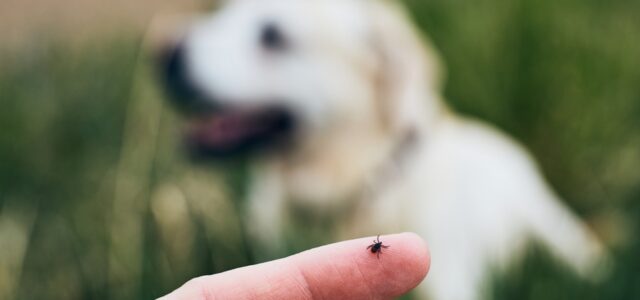Call for your appointment today 914-666-4665 | Mt. Kisco, New York

Powassan virus in children is not often reported. In this article, the authors describe powassan virus in children involving two infants with tick bites who developed Powassan virus encephalitis. As the authors point out, their case report not only demonstrates that rapid transmission of POWV can occur, but it highlights the importance for parents/caregivers to follow tick bite prevention methods. In these cases, adults unknowingly exposed their children to ticks infected with Powassan virus.
Powassan virus encephalitis in two children
A 5-month-old child was hospitalized after experiencing fevers for two days, along with vomiting and facial twitching which progressed to seizures. Two weeks prior to the onset of symptoms, a tick was removed from the infant’s forehead. Test results for the Powassan virus were positive.
The second case involved a 2-month-old child who presented with a fever and listlessness for one day. “He then developed left sided focal seizures (rhythmic left arm twitching, facial deviation to the left, and tongue thrusting with lip smacking),” the authors write.
A tick was removed from the infant’s arm approximately two weeks before he was hospitalized. The parents believed the father or dog had brought a tick into the house following a walk outside. The tick was not engorged and had not fed for more than 24 hours, the authors report.
READ MORE: No neurologic damage in 3 children with Lyme disease and Powassan virus
“POWV infection was confirmed by a positive PRNT on both serum and CSF,” the authors explain.
“POWV infection of humans has been notable for the severity of both the acute disease and the long-term sequelae.” In fact, chronic illness occurs in approximately 50% of patients, the authors report, with symptoms including hemiplegia [paralysis on one side of the body], wasting, personality changes, and headaches.
Adults unknowingly expose children
“The circumstances under which the 2 children reported here acquired infection require some comments that are pertinent to prevention of future cases,” the authors write.
Infants typically would not be exposed to tick bites. These cases demonstrate the importance in adopting tick bite prevention methods. Feder points out, “in both of our cases, parents presumably brought ticks into their homes after outdoor activities.”
[bctt tweet=”Powassan virus transmitted rapidly to two young children. Case report highlights need for preventative tick bite measures by parents/caregivers.” username=”DrDanielCameron”]
In the first case, the father had been out walking in the woods and brushed off multiple ticks outside. He presumably brought a tick into the home. In the second case, a father had been walking outside with a dog. The family believed either the father or dog had brought the tick into the house.
Parents/caregivers should be educated about several preventative measures:
- “Outdoor clothing may prevent access to skin, but the ticks may remain undetected and will crawl off the person when body heat is reduced, such as when a coat is removed.”
- Parents should check for ticks more than once. “Because of searching for an optimal skin site, ticks will not immediately attach to a person.”
- “Parents should be educated about the need to treat outdoor clothing with Permethrin, an effective mode of preventing tick bites … Contact with treated fabric will kill all ticks within 2 hours.”
- “Parents should also be educated about the possibility that dogs could bring ticks into homes, and that these animals should be inspected after every outdoor exposure.”
- “Most anti-tick preventives only work after a tick has attached to a dog [the tick needs to ingest the chemical], although there are collars that are impregnated with Permethrin or similar products that might repel or kill ticks.”
Editor’s Note:
Although the authors did not discuss treatment of the two infants, both recovered.
Related Articles:
Podcast: 6-week-old boy with Babesia
Podcast: 5-week-old girl with Lyme disease
Case report: Fatal Powassan virus infection: a.k.a deer tick virus
References:
- Feder HM, Telford S, Goethert HK, Wormser GP. Powassan Virus Encephalitis Following Brief Attachment of Connecticut Deer Ticks. Clin Infect Dis. 2020.




I would like to see follow up for families to better understand what outcomes can occur for children.
My grandson is the first case discussed in this article. He is now 6 years old and there is no guidance for possible complications, though there are some that were not discovered until recently.
Thanks for reminding us of the need for further research.
Thanks for sharing. I have not seen information on possible complications. I am concerned that any subsequent symptoms may be related to a treatable tick borne illness.